
|
| |
|
|
|
|
 |
|
|
The 6pdr anti-tank gun
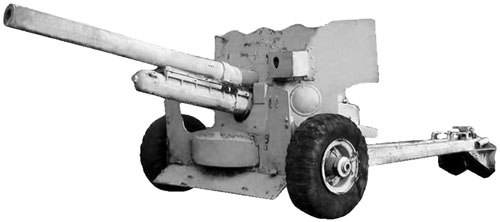 |
The 6pdr Anti-tank Gun
The 6pdr was available as a design before the out-break of the war, but was shelved in 1939 until required. Its arrival on the battlefield was further delayed in 1940 when it was decided to continue producing the 2pdr anti-tank gun.
|
|
It was thought that the delay in the change over
in production and re-training of crews would hinder the supply of guns
when there was already a severe shortage.
The first guns were produced in November 1941 after the experiences in the desert proved it was finally required to deal with the increasingly well-armoured German tanks. The 6pdr soon started to replace the 2pdr in Royal Artillery units, and as stocks allowed it was issued to infantry units.
Initially the 6pdr barrel was longer, but the length of the British lathe beds meant the barrel had to be made slightly shorter than intended. This affected the muzzle velocity. Initial production (Mk 2 anti-tank, Mk 3 tank guns) concentrated on the 43 calibre (245cm) weapon.
During production of the Mk 4 Anti-tank and Mk 5 tank guns larger lathes were available and the barrel was lengthened to 50 calibres (285cm) in order to increase the muzzle velocity.
|
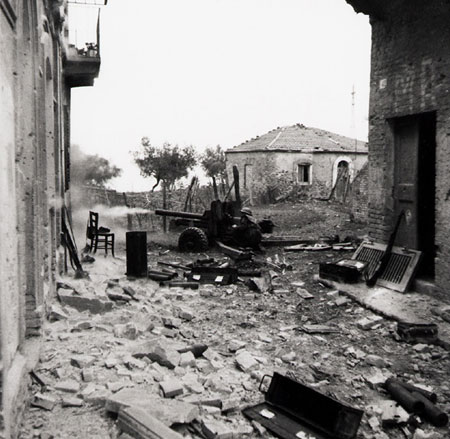 |
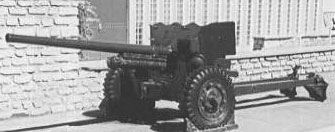 |
When the US started to produce their own (57mm, M1) their longer lathes
allowed them to manufacture their’s to the original design
specifications. It was adopted by the USA in 1941.
It was also used in a large number of British tanks, including the
Crusader III, Cavalier, Centaur 1, Cromwell I to III, Valentine VIII to
X and Churchill III, IV and X.
|
Despite the fact that many 2pdrs were new in the field, fresh off the production lines, they proved themselves to be out classed by the German panzers. It took a great deal of skill and courage to effectively use a 2pdr against Axis armour. The newer German long 5cm and 7.5cm guns could out range the 2pdr, sitting back and sniping, while the returned shots from the 2pdrs barely made a scratch on their armour.
|
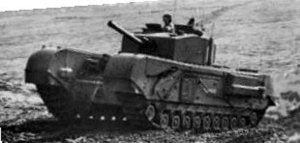 |
Shot type (see notes)
|
Shell Weight (kg/lb.)
|
Muzzle Velocity (m/sec / ft/sec)
|
Penetration
|
HE
|
2.7/6
|
823/2700
|
~
|
AP
|
2.7/6
|
821/2693
|
74mm @ 1000m
|
APCBC (introduced after Tunisia)
|
3.2/7
|
1234/4050
|
88mm @ 1000m
|
APDS (Late War)
|
1.5/3.2
|
~
|
146mm @ 1000m
|
|
The 6-pdr changed the situation. The anti-tank
gunners could once again take on the Germans from the front. They also
freed up many 25-pdr field guns, which had been temporarily pressed
into the anti-tank role, so they could be returned to their primary
infantry support role.
Several different types of ammunition were developed for the 6pdr (see table left).
Table notes: AP = Armour Piecing, APCBC = Capped, ballistic capped, shot, APDS = Discarding sabot shot. Penetration figures are given at 30 degrees angle of impact against homogeneous plate. It should also be noted that penetration depended on the quality of the opposing armour, and that different nations had different standards of measurement.
|
|
Initially, a plain (AP) steel shot was used, the original loading being followed in service by a higher-velocity loading. From October 1942 this was replaced by a capped (APC) shot to improve the performance against face-hardened armour, at the same time as a ballistic capped shot (APCBC), which was heavier (and therefore had a reduced muzzle velocity), but had improved long-range performance. A HE shell was also developed.
6-Pounder Field Gun
Ordnance(Gun Mark II on Carriage Mark I)
Weight with breech mechanism: 350 kg
Total weight in action: 1145 kg
Length: 30.77 m
Elevation: -5° to +15°
Traverse: 45° right and left
The 6pdr wasn’t fully phased out of service until 1960.
Right: Mk IV 6pdr in action in France 1944.
|
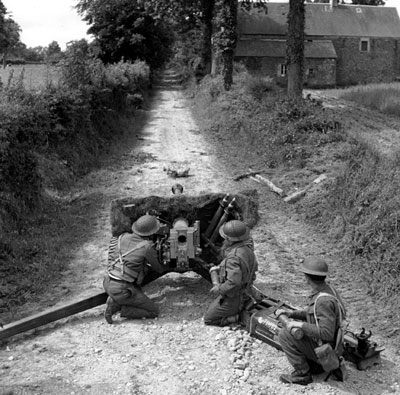 |
Last Updated On Friday, December 19, 2008 by Wayne at Battlefront
|
|
|